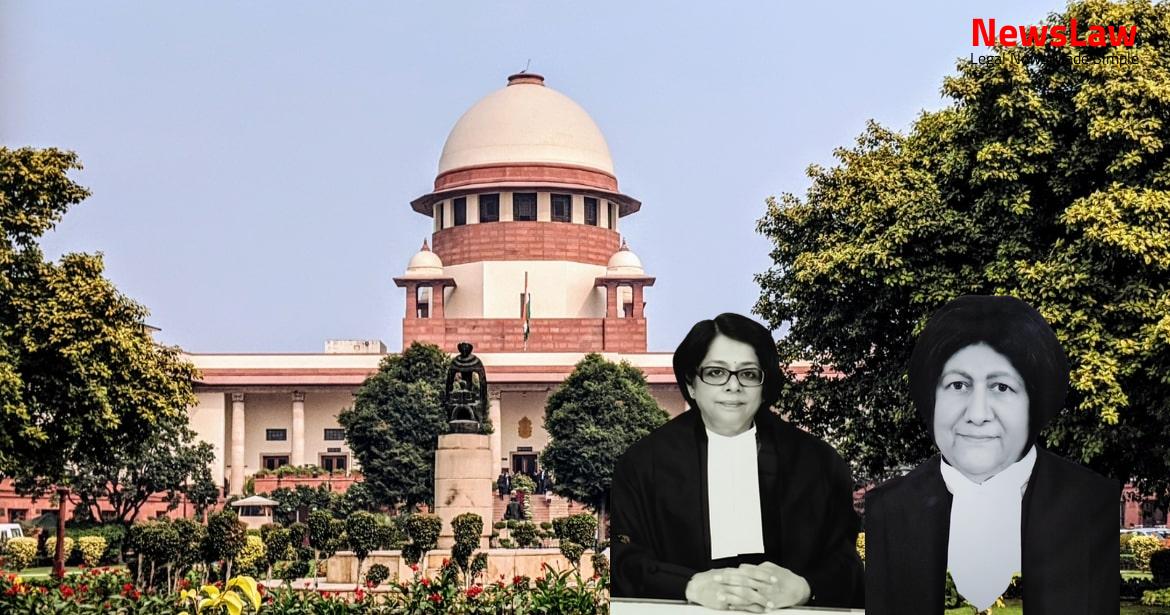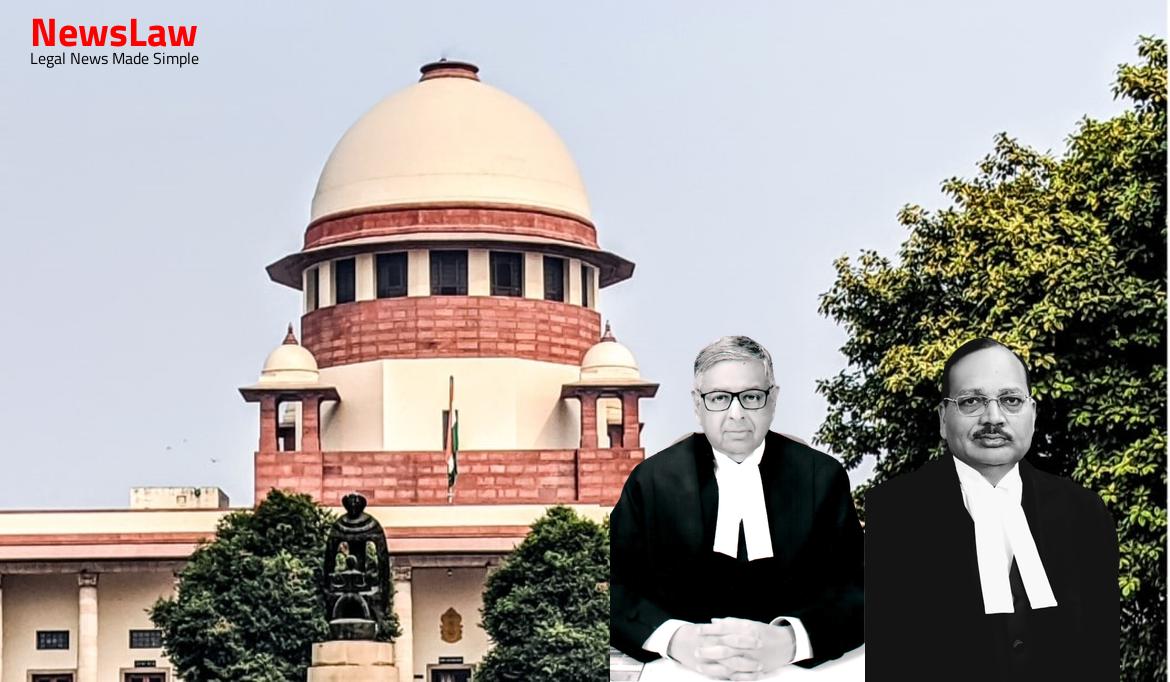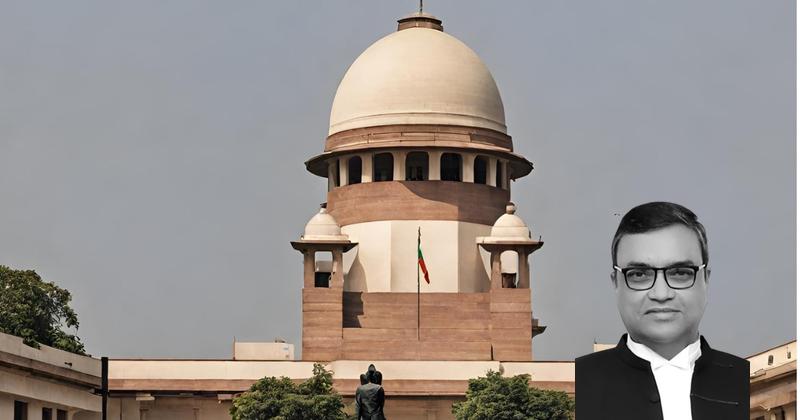In a significant legal ruling, the Supreme Court of India delivered a judgment regarding the review D.P.C. for recruitment to OAS Class-II posts. The case involved contesting respondents seeking quashing of a judgment and orders related to their recruitment and promotion. The Division Bench’s decision to set aside the original judgment and direct a review D.P.C. within three months has far-reaching implications for the recruitment process. Stay tuned to learn more about the details of this crucial case!
Facts
- State filed Special Leave Petitions aggrieved by the common Judgment and Orders of the Orissa High Court.
- Contesting Respondents sought quashing of O.A.T.’s Judgment, seeking recruitment and promotion to OAS Class-II posts.
- Division Bench set aside O.A.T.’s Judgment and directed a review D.P.C. for recruitment to 150 vacant OAS Class-II posts from 2008 within 3 months, and to be conducted yearly.
- Contesting Respondents had not completed necessary steps for selection or promotion under the old OAS Class-II Rules and Regulations.
- Counsel’s reliance on Y.V. Rangaiah case rejected; citing Deepak Agarwal, vacancies prior to rule amendments governed by old rules.
- No statutory duty on Respondents to prepare annual panels, it was the State’s duty under the Rule.
- The contesting Respondents who were eligible were recommended for appointment by way of selection/promotion under the OAS Class II Rules, 1978 and the OAS Class II Regulations, 1978.
- The State cannot discriminate in selection/promotion to OAS Class – II posts on a ‘pick-and-choose’ basis as it is a model employer.
- The recruitment process for the OAS Class – II posts for the year 2008 was put on hold by the State until the recruitment for the years 2001-2005 was completed.
- The State faced a delay in completing the recruitment process for the years 2007-2008, leading to various O.A.s being filed by the contesting Respondents.
- The recruitment process was to be undertaken in accordance with the OAS Class II Rules, 1978 and the Orissa Administrative Service, Class – II (Appointment by Promotion and Selection) Regulations, 1978.
- The State issued a Resolution for the restructuring of the Orissa Administrative Service cadre in 2009.
- The Orissa Public Service Commission was required to recommend a list of suitable candidates for selection or promotion, which would form the final list for appointments to OAS Class – II posts.
- 50% of the vacancies were to be filled by direct recruitment and 50% by promotion from among Class – III/Group C employees as early as practicable.
- The Tribunal directed the State to take immediate steps to fill up Class – II/Group ‘B’ posts in the Orissa Revenue Service cadre leading to further challenges.
- Vacancies occurring before the repeal of the OAS Class II Rules, 1978 and OAS Class II Regulations, 1978 were governed by the old rules.
Also Read: Anticipatory Bail Application in Different Cases: Landmark Judgment by the Supreme Court of India
Arguments
- The Petitioner argued that the Division Bench erred in directing the State to convene a review D.P.C.
- They cited a recent decision in Union of India v. Krishna Kumar to support their argument that no right had accrued to the contesting Respondents based on recommendations by Departmental Authorities.
- The Petitioner pointed out that contesting Respondents did not challenge the abolition of the OAS Class-II cadre and the creation of the Orissa Revenue Service Group ‘B’ cadre.
- It was argued that the contesting Respondents could not claim a lien over the abolished OAS Class-II cadre and should have presented themselves for appointment under the new ORS Rules, 2011 for the Orissa Revenue Service Group ‘B’ cadre.
- The Petitioner emphasized that it was not appropriate for the contesting Respondents to seek appointments to OAS Class-II posts under repealed rules in an abolished cadre.
Also Read: Supreme Court of India Dismisses Writ Petition on Arms Export to Israel
Analysis
- The State Government has the authority to determine the number of vacancies in the service each year.
- Recruitment to the service cannot be done without prior consultation with the Commission.
- Once the structure of Assam Rifles underwent a change following the creation of the intermediate post of Warrant Officer, persons holding the post of Havildar would be considered for promotion to the post of Warrant Officer.
- Vacancies which arose prior to the amendment of the Recruitment Rules would not necessarily be governed by the Rules which existed at the time of the occurrence of the vacancies.
- The recruitment process could be stopped by the Government at any time before a candidate has been appointed.
- The right to be considered for promotion accrues on the date of consideration of eligible candidates.
- Dismissal of a SLP in limine does not constitute any declaration of law or a binding precedent under Article 141 of the Constitution.
- An in limine dismissal at the threshold without giving detailed reasons implies that the case before the Court was not considered worthy of examination for a reason other than the merits of the case.
- A candidate has the right to be considered in the light of the existing rules, which implies the ‘rule in force’ on the date the consideration took place.
- There is no universal or absolute rule that vacancies are to be filled invariably by the law existing on the date when the vacancy arises.
- A candidate has no vested right to get the process completed, and the Government could be required to justify its action on the touchstone of Article 14 of the Constitution.
- The appellants did not have a right to be considered for promotion.
- The vacancies that arose before 17-5-1999 did not have to be filled under the unamended Rules.
- The contesting Respondents were only recommended for consideration, not appointed.
- Some of the contesting Respondents participated in the D.P.C. for the newly created Orissa Revenue Service Group ‘B’ cadre.
- During the restructuring exercise in 2009, the OAS Class II cadre was abolished.
- There is no statutory duty mandating the State to perform under the applicable Rules in this case.
- The contesting Respondents cannot claim lien over the abolished OAS Class – II posts.
- Contesting respondents did not have a vested or fructified right of promotion to OAS Class II posts during the recruitment year 2008.
Also Read: National Task Force for Healthcare Safety: Ensuring Dignity and Protection for Medical Professionals
Decision
- The Orissa High Court’s Judgment and Orders in various W.P. (C) cases were set aside.
- The Orissa Revenue Service Group ‘B’ cadre was re-constituted.
- The Civil Appeals were allowed based on the findings.
- The Division Bench’s direction to appoint contesting Respondents in abolished cadre vacancies contrary to the law was set aside.
- Pending Interlocutory Applications were disposed of in line with the Judgment.
Case Title: THE STATE OF ORISSA Vs. DHIRENDRA SUNDAR DAS
Case Number: C.A. No.-004646-004646 / 2019



